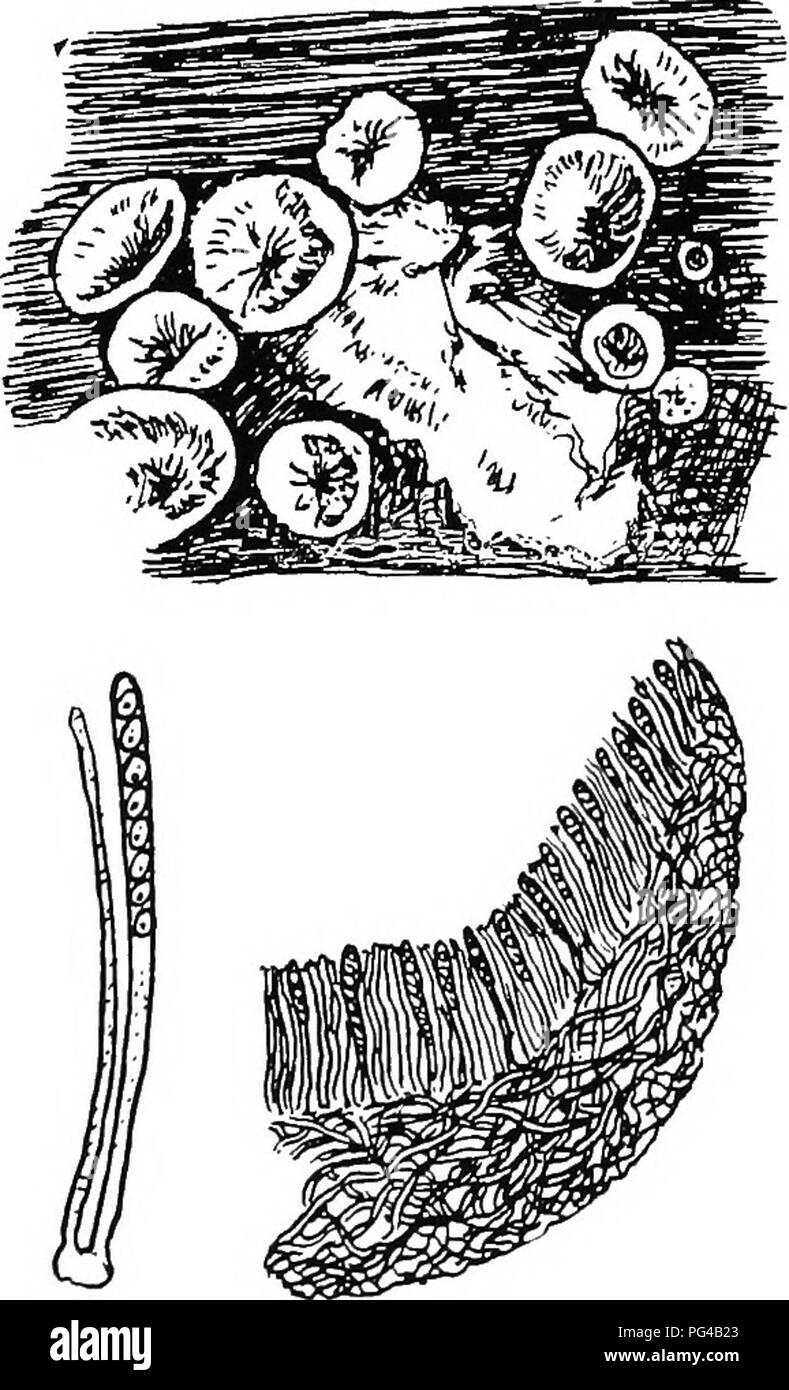. Botany for agricultural students . Botany. 368 THALLOPHYTES numerous nuclei of the antheridium flow into the trichogyne and pass on into the oogonium where thej- pair and fuse with the numerous nuclei of the oogonium. From the fertilized oogonium, now known as the ascogoniuin, branches called ascogenous hyphae are developed and on the ultimate branches of these are produced the asci. From beneath the ascogonium sterile hyphae (hyphae producing no asci) grow up among the ascoge- nous hj^phae and constitute the paraphyses of the hymenium. Other sterile hyphae form the wall of the cup-shaped pl

Image details
Contributor:
Central Historic Books / Alamy Stock PhotoImage ID:
PG4B23File size:
7.2 MB (418.3 KB Compressed download)Releases:
Model - no | Property - noDo I need a release?Dimensions:
1232 x 2029 px | 20.9 x 34.4 cm | 8.2 x 13.5 inches | 150dpiMore information:
This image is a public domain image, which means either that copyright has expired in the image or the copyright holder has waived their copyright. Alamy charges you a fee for access to the high resolution copy of the image.
This image could have imperfections as it’s either historical or reportage.
. Botany for agricultural students . Botany. 368 THALLOPHYTES numerous nuclei of the antheridium flow into the trichogyne and pass on into the oogonium where thej- pair and fuse with the numerous nuclei of the oogonium. From the fertilized oogonium, now known as the ascogoniuin, branches called ascogenous hyphae are developed and on the ultimate branches of these are produced the asci. From beneath the ascogonium sterile hyphae (hyphae producing no asci) grow up among the ascoge- nous hj^phae and constitute the paraphyses of the hymenium. Other sterile hyphae form the wall of the cup-shaped plant body or ascocarp. Usually several oogonia are involved in the formation of a single ascocarp. Brown Rot of Stone Fruits (Sclerotinia fructigena). — This Fungus, shown in Figure 319, is one of the parasitic forms of the Pezizales. In some years this Fungus is an extremely destructive para- site. It attacks nearly all stone fruits and in some years nearly half of the Plum and Peach crop rtiay be destroyed by this disease. In Georgia the estimated loss in Peaches and Plums caused by this disease in 1900 was between $500, 000 and $700, 000. To a limited extent it attacks the twigs and flowers and does some damage in this way. Fruits half size or larger seem to be most susceptible to the attack of the Fungus. The disease first shows as small decayed spots, dark brown in color. The fruit decays rapidly and soon hyphae break through from beneath, forming moldy patches on the surface. The moldy patches contain conidiophores which. Fig. 319. — Sclerotinia fructigena. Above, the apothccia developed on a decayed Plum; at the right, below, section through an apothecium, show- ing asci and paraphyses; at the left, below, an ascus and paraphysis more highly magnified. After Duggar.. Please note that these images are extracted from scanned page images that may have been digitally enhanced for readability - coloration and appearance of these illustrations may not perfectly resemble the o